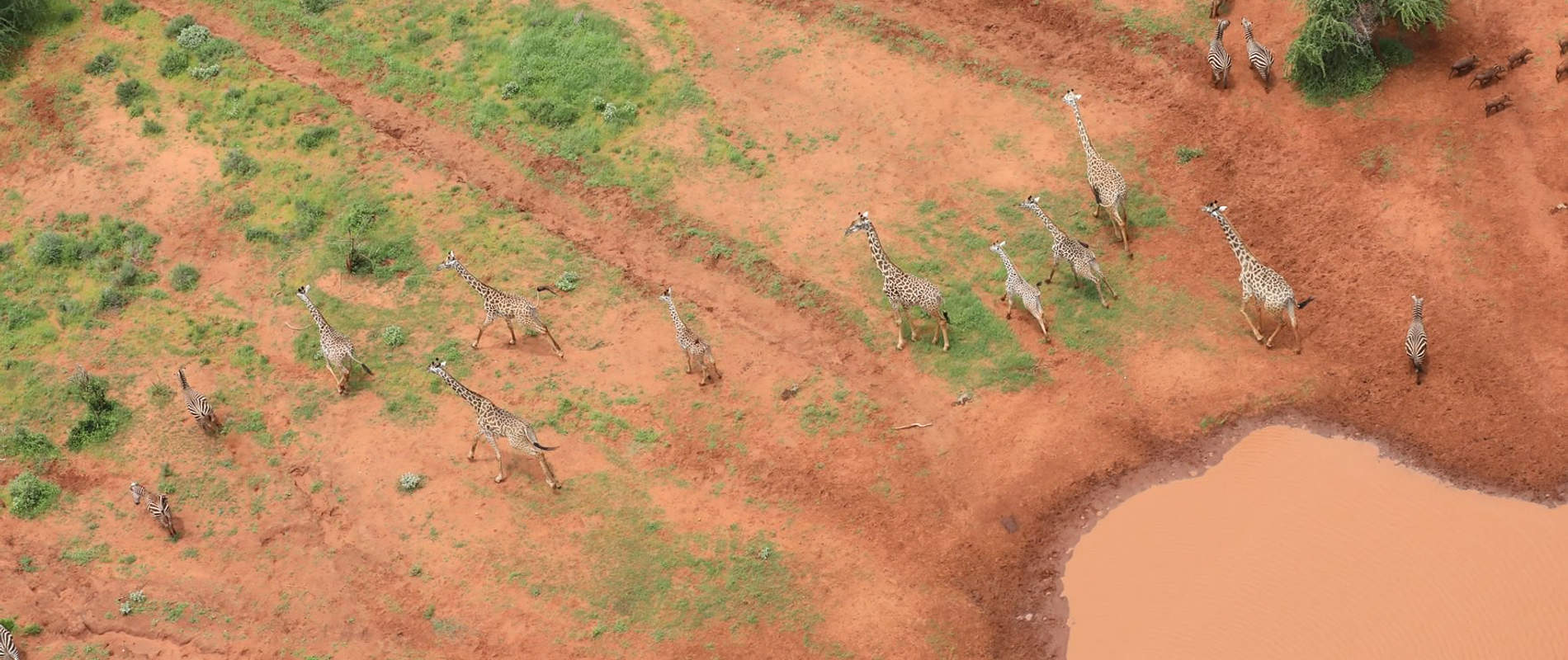December is always a quiet month since ample water from Tsavo’s primary rainy season fills all the waterholes across the Parks, spreading out wildlife populations and making it more difficult for poachers to operate, whilst many would be poachers also mostly return home to plant and tend to crops on their farms.
During the month, one veterinary case was attended to near Voi, after an emaciated lion was spotted near the main gate with porcupine quills protruding from its face. With the Tsavo Veterinary Unit unavailable as it was on annual leave, Dr. Kariuki of the SWT/KWS Amboseli Veterinary Unit was collected from Amboseli Head Quarters and flown to Voi to treat the lion, which was found to also be suffering from a severe case of mange. It is thought that its compromised condition is the reason that it took a chance on the porcupine. The lion was treated for the mange as well as having the porcupine quills removed and before being administered with an antibiotics and anti-inflammatories.

The SWT helicopter also attended to two Human-Wildlife Conflict call-outs to push elephants out of community farms and back into protected areas. The first was a herd of 13 elephants, 10 of which were successfully pushed back into the Chyulu Hills National Park through a section of removed fence. The elephants had to be led in difficult conditions through a small section of lava flow, so unfortunately three of the elephants were unable to be guided back into the Park through the section of dropped fence, however, it is believed that they left the area and returned to the Park via another route the following night. Another case was attended to near Sagalla Hill, where a herd of 10 elephants were successfully pushed out of farms and into the neighbouring Sagalla Ranch.
There were two other notable sightings in December, the first being a quick glimpse of a newborn black rhino calf with its mother, and the second, seeing the Tiva River in full spate. The river had completely burst its banks and extended over a km wide in some places. Both airstrips in Ndiandaza were half submerged in water. Fortunately, KWS had already evacuated the permanent camp on the north bank of the river, for they would have been completely surrounded by water and unable to escape by vehicle.

